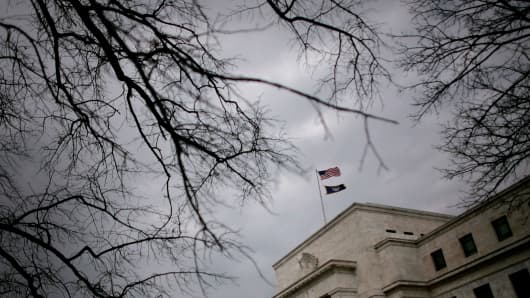Changing the Mind as the Facts Change
Consider the latest Federal Open Market Committee (FOMC) statement, issued on May 1. That document reaffirms the Fed's commitment to maintain the target for the federal funds rate (the only interest rate under its direct control) between 0 and 0.25 percent (unchanged since December 2008) as long as the unemployment rate remains above 6.5 percent, which the Fed expects will be the case until 2015. But then the statement contains a little-noticed rider – very typical of explicitly conditional forecasts – that the Fed "is prepared to increase or reduce the pace of its purchases (i.e., monthly purchases of $85 billion of mortgage and Treasury securities) to maintain appropriate policy accommodation as the outlook for the labor market or inflation changes."
(Read More: Is the Fed Being Forced to Take More Risks?)
And here is an immediate conclusion: This rider reflects the FOMC's view that policy changes may be necessary – probably well before 2015 - as labor markets continue to improve in an environment of moderate economic activity.
In fact, the rider is an escape clause reminiscent of the old quip: "When the information changes, I change my mind. What do you do?"
All that sends the timing of policy change to what all other forecasters are watching: the pace of economic growth, employment creation and price stability as defined by an inflation rate of 2 percent.To complete the picture, here are a number of other factors impacting these three variables that are also closely watched by the Fed.
First, there is the U.S. fiscal policy, because taxes and public spending have a direct bearing on economic growth, employment and inflation. Noting, in its last statement, that the fiscal restraint was a drag on the economy, the FOMC implies that this should be offset with an appropriately easy credit stance.
Second, the E.U. – nearly a quarter of the world gross domestic product (GDP) – is expected to be in recession this year and next. That will be another important drag on the U.S. economy, because that area takes one-fifth of American exports. But the damage does not stop there. Given the magnitude of the E.U. economy, its continuing downturn will also shrink America's global export markets.
Third, the Fed is also watching the dollar's exchange rate. With exports accounting for 13 percent of the economy, the competitive position of U.S. companies on global markets is of great importance for jobs and incomes. The dollar's 10 percent appreciation in trade-weighted terms over the past 12 months is a big help in preserving price stability. But currency manipulations for trade advantage bear watching, as noted on Saturday in London by the
G-7 finance ministers
. Washington must be particularly vigilant on exchange rate issues, because a strengthening dollar and a growing economy will lead to widening U.S. trade deficits – another drag on economic growth.
Bond Markets Will Lead to Monetary Tightening
How vigilant Washington will be remains to be seen as it continues to acquiesce in yen's 20 percent trade-weighted depreciation over the past 12 months – despite protests from American industries.
And there is something else: Washington may soon wish the bond market vigilantes would be as forgiving of its monetary policies. Omens are not good, though. It just took a relatively good labor market number on May 3 to raise the yield on the 10-year Treasury note by 24 basis points in six trading sessions.
That is how fast things can go. And this bond market movement provides the best answer to the three questions posed in the opening paragraph.
(Read More:
Another Crisis Coming, Worse Than the Last: Roche)
Remember, rising bond yields signal rising inflation expectations, which, in turn, indicate a vote of no confidence in the monetary policy. Once that chain of events sets in, it is only a question of time before the central bank has to respond to the steepening yield curve. In the meantime, however, bond market vigilantes have already forced a de facto policy shift to tighter credit conditions.
Investors, of course, understand this process and anticipate its onset by selling bonds. Those looking for precise timing of a policy shift are usually the ones who, as the popular saying goes, are left "holding the bag." Correctly anticipating this process is much more important than the futile fixation in some quarters on instruments central banks use to operate their market-induced policy shifts.
Judicious investors also tend to ignore doomsayers who are seldom, if ever, reminded of the latest apocalypse they called wrong. Just think of all those who kept predicting, over the last two years, an imminent blowup of the euro area and a catastrophic demise of the euro. Undeterred by their huge euro misses, they are now back with dire pronouncements about America's next Great Recession and another debilitating financial crisis.
And what did I say? Ever since last fall, this post held the view that bonds should be sold and equities bought, with a caution flag on gold. Never once was there a call here about unraveling euro area or the death of the European single currency.
Michael Ivanovitch is president of MSI Global, a New York-based economic research company. He also served as a senior economist at the OECD in Paris, international economist at the Federal Reserve Bank of New York and taught economics at Columbia.



